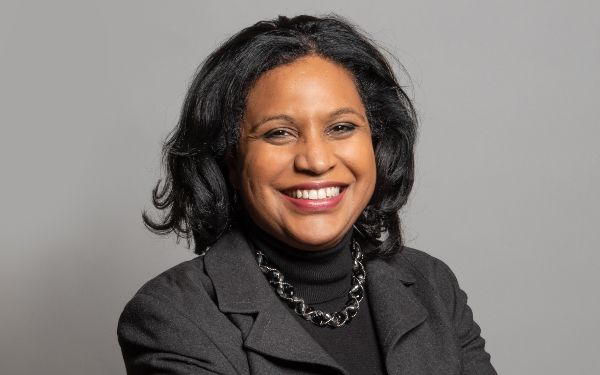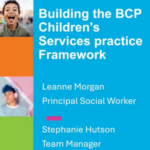
Record numbers of children’s social workers are in post in England but there has been a fall in the number holding cases, Department for Education (DfE) figures have revealed.
There was an increase of about 1,200 full-time equivalent (FTE) social workers employed in council children’s services in the year to September 2024, with numbers rising by 3.7% to 34,328.2, the highest figure in a data series that started in 2017.
However, the data, which covers registered social workers apart from the director of children’s services, revealed that there had been a fall in the number of practitioners holding cases in 2023-24, with four in ten now not being case holders.
At the same time, the FTE vacancy rate – which hit a high of September 20% in 2022 – fell from 18.9% to 17.3%, with the number of full-time equivalent vacancies dropping by just over 500 (6.9%), to 7,188.6.
The proportion of FTE agency social workers in the workforce also fell, from 17.9% to 16.2%, with their number dropping by over 650 (9.2%), to 6,520.7, a trend attributed in part to authorities preparing for the introduction of rules restricting their use in local authority children’s services.
Improvement in retention
Fewer FTE social workers left their posts in the year to September 2024 (5,254.6) than over the previous 12 months (4,728.7), bringing the turnover rate down from 15.9% to 13.8%, the lowest proportion since 2019-20.
Provisional DfE data suggests that 61% of these leavers – about 2,868.1 FTE staff or 8.4% of the workforce – left local authority children’s social work altogether in 2023-24. In 2022-23, 3,028.3 staff (9.1% of the then workforce) left the sector.
Of other leavers in 2023-24, 27% (1,275.1 FTE staff) moved between children’s services authorities and 12% (585.5) took up an agency post in the sector.
As in previous years, staff with less than two years’ service in their current local authority made up the largest group by time spent with their employer, with their percentage increasing from 30.9% to 31.4% (10,786.7).
The proportion of those with between two and five years’ service fell, from 26.8% to 25%.
Recruitment levels
The number of new starters dropped by just over 400 FTE staff from 2022-23 to 2023-24, reflecting the fact that no one graduated from the biennial Step Up to Social Work programme during the latter period.
However, at 5,613.4 FTE posts, the number of starters was higher than in any previous non-Step Up year, which the DfE suggested reflected the fact that record numbers of people (650) qualified through social work apprenticeships in 2023-24.
The figures also revealed that the average FTE children’s social worker was off sick for 3.4% of their working time in 2023-24, up from 3.2% in 2022-23.
Workforce demographics
The number of FTE social workers grew in every age group, with the largest increase (of about 550 staff) being in the 40-49 segment. Staff aged 30-39 continued to be the largest group, accounting for 30.1% of the workforce, followed by the 40-49 group, which constituted 26.3% of the total.
The proportion of female staff was similar to that in 2023 (87.5%, compared with 87.4%), while the percentage of FTE social workers from ethnic minority groups (excluding white minorities) grew from 25.3% to 26.9%.
This was driven, chiefly, by the growth in the proportion of black staff, from 14.7% to 15.7%, between 2023 and 2024.
Caseload average hits record low
According to the DfE’s measure of average caseloads, these hit a record low of 15.4 in September 2024, down from 16.0 a year earlier.
The rate is calculated by dividing the number of children or young people allocated to FTE children’s social workers by the number of FTE practitioners.
In previous years, the caseload rate has fallen due to an increase in the number of FTE children’s social workers holding cases, amid a relatively stable number of cases. However, in 2023-24, the key factor was a drop in the number of cases held by social workers.
Celebrate those who’ve inspired you

Photo by Daniel Laflor/peopleimages.com/ AdobeStock
Do you have a colleague, mentor, or social work figure you can’t help but gush about?
Our My Brilliant Colleague series invites you to celebrate anyone within social work who has inspired you – whether current or former colleagues, managers, students, lecturers, mentors or prominent past or present sector figures whom you have admired from afar.
Nominate your colleague or social work inspiration by filling in our nominations form with a few paragraphs (100-250 words) explaining how and why the person has inspired you.
*Please note that, despite the need to provide your name and role, you or the nominee can be anonymous in the published entry*
If you have any questions, email our community journalist, Anastasia Koutsounia, at anastasia.koutsounia@markallengroup.com
Fall in number of case-holding practitioners
From September 2023 to September 2024, the number of case-holding social workers fell by 1.5%, from about 21,111.4 to 20,803.5 FTE staff.
This means the proportion of case holders in the workforce (60.6%) is at its lowest level since records began in 2017.
The data showed small increases in the number of social work-registered senior managers and middle managers, who accounted for 2.1% and 5% of the workforce, respectively, in September 2024.
The number of first-line managers grew by just over 400 FTE staff, to 5,449.7, 15.9% of the workforce, up from 15.2% a year earlier.
Growing number of qualified staff not holding cases
The group that saw the biggest rise was qualified practitioners who were not holding cases, whose number increased by 1,700, to 6,373.1 – 18.6% of the workforce, up from 14.1% in 2023.
The DfE said this was caused in part by a new rule, under which practitioners previously categorised as case holders were reclassified as non-case holders if they did not hold any cases at the time of the data collection.
Social workers who do not hold cases, and are also not managers, include practice development, workforce development and quality assurance staff. Given that the DfE data is taken on 30 September each year, it may also include staff just starting their assessed and supported year in employment (ASYE) programme who have not yet been allocated a caseload.
Social workers ‘have faced impossible workloads for too long’

Janet Daby (credit: Richard Townsend Photography)
In response to the figures, children and families minister Janet Daby – herself a former social worker – said that practitioners had struggled for “too long” with “impossible workloads and an over-reliance on agency staff”.
Consequently, she said it was “encouraging” to see “average caseloads reducing, fewer agency workers and fewer people leaving the profession”.
However, she added: “I know that social workers still face significant challenges, which is why I’m determined to see this trend continue.”
She said that the profession was “at the heart” of the government’s plans to reform children’s social care.
About the children’s social care reforms
- Rolling out multidisciplinary family help teams to take responsibility for targeted early help and child in need cases.
- Creating multi-agency teams, including health, police and education professionals, as well as social workers, to take responsibility for child protection cases.
- Introducing a single consistent identifier for every child and requiring staff to share information for the purposes of safeguarding.
- Requiring councils, prior to issuing care proceedings, to offer families a family group decision making meeting, enabling their wider network to come up with plans for children.
- Putting the existing agency social work rules, contained in statutory guidance, into law and extending their remit to non-social work staff in children’s services.
- Creating regional care co-operatives to take responsibility for commissioning care placements from individual authorities.
- Establishing a new type of placement for children with complex needs who may need to be deprived of their liberty.
‘Progress and ongoing challenges’ for workforce – ADCS
Echoing some of Daby’s message, the Association of Directors of Children’s Services said that the workforce data highlighted “both progress and ongoing challenges”.
Nicola Curley, chair of the ADCS’s workforce policy committee, said it was “encouraging” to see growth in the number of social workers and reduction in the use of agency staff.
However, she added: “Despite these positive trends, the high vacancy rate in some areas continues to be a concern. Many local areas are facing their own pressures, and we need to ensure that national statistics don’t mask this.
“ADCS will continue to work with the Department for Education and others on implementing reforms to ensure they impact positively on children and families and result in the sustainable workforce they both need and deserve.”






 Bournemouth, Christchurch and Poole
Bournemouth, Christchurch and Poole  Hampshire County Council
Hampshire County Council  Oxfordshire County Council
Oxfordshire County Council  South Gloucestershire Council
South Gloucestershire Council  Wokingham Borough Council
Wokingham Borough Council  Webinar: building a practice framework with the influence of practitioner voice
Webinar: building a practice framework with the influence of practitioner voice  ‘They don’t have to retell their story’: building long-lasting relationships with children and young people
‘They don’t have to retell their story’: building long-lasting relationships with children and young people  Podcast: returning to social work after becoming a first-time parent
Podcast: returning to social work after becoming a first-time parent  How managers are inspiring social workers to progress in their careers
How managers are inspiring social workers to progress in their careers  Workforce Insights – showcasing a selection of the sector’s top recruiters
Workforce Insights – showcasing a selection of the sector’s top recruiters 

 Facebook
Facebook X
X LinkedIn
LinkedIn Instagram
Instagram
Am I reading this correctly?
Workloads are down compared to last year?
But by my reckoning, in reading this article, not even by one case/family? I do not think this is anything to be bragging about.
At a stretch I think it could be stated that this is a downward trend but to be saying proudly that this is a record low is deceiving.
I think they should all have training again to make sure they are upto date with law and acts
It’s misinformation and the process of reporting is not accurate. This is a national average but some areas have higher needs than others, which redult with increase levels of intervention. I have a Team which are mainly made up of agency staff, they come and go without any thought of the impact on our families. Case loads fluctuate between 28 – 34.